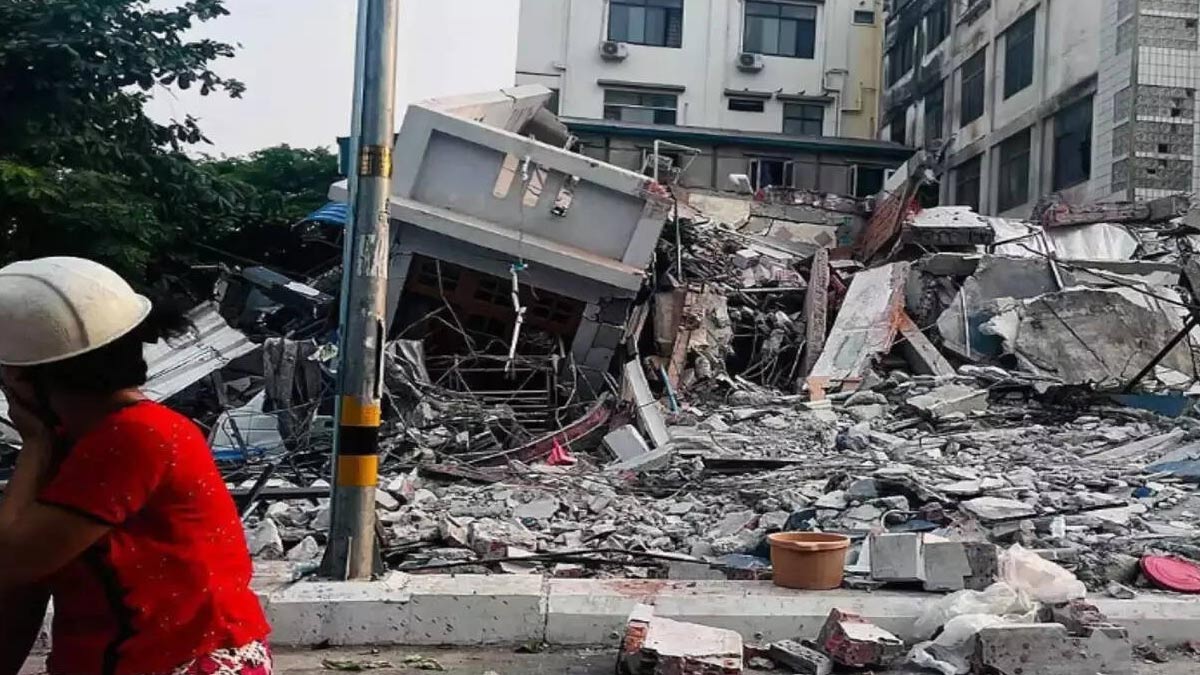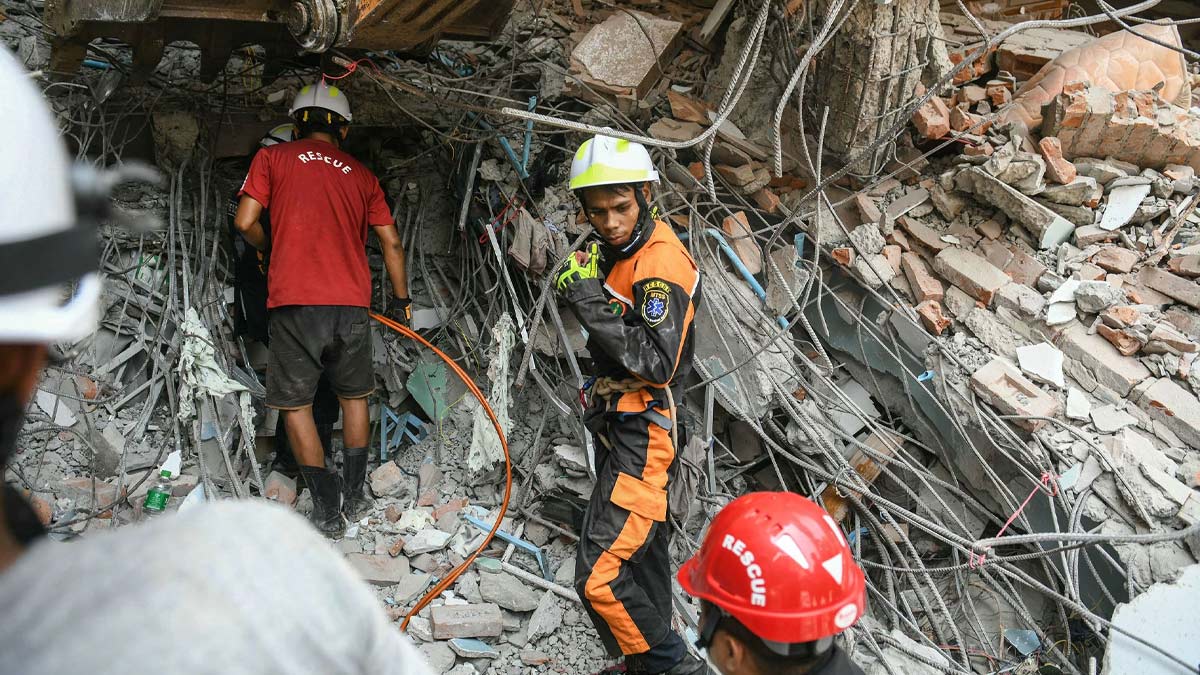
A powerful 7.7-magnitude earthquake struck Myanmar last week, unleashing an immense force equivalent to 334 atomic bombs, according to geologists. The disaster has resulted in the tragic loss of more than 1,700 lives and has left thousands without shelter. While the immediate devastation is evident, experts warn that the long-term health consequences could be just as catastrophic, with the risk of injuries, psychological trauma, and disease outbreaks looming over the affected population.
Table of Content:-
Ongoing Aftershocks and Seismic Threats
Geologists caution that Myanmar is likely to experience aftershocks for months due to the persistent collision between the Indian and Eurasian tectonic plates. These smaller but dangerous tremors pose a serious risk to already weakened structures, delaying rescue operations and exacerbating the humanitarian crisis.
Renowned geologist Jess Phoenix highlighted the severity of the event, stating, "The force of this earthquake is comparable to over 300 atomic bombs. The aftershocks will continue for months, further destabilizing the region." The situation is worsened by Myanmar’s ongoing civil conflict, which has hampered relief efforts, making it even more challenging to assess the full scale of destruction and provide necessary aid.

Overwhelmed Healthcare System
One of the most pressing issues following the disaster is the immense strain on Myanmar’s medical infrastructure. Thousands of survivors have sustained injuries ranging from minor wounds to life-threatening fractures, internal bleeding, and crush-related trauma. The influx of patients has overwhelmed hospitals, which were already struggling with limited resources before the quake.
Also Read: FDA Greenlights Blujepa: A Game-Changing Oral Antibiotic for UTI Treatment in Women and Teens
A severe shortage of medical supplies, including antibiotics, pain relief medications, and surgical tools, is making it nearly impossible for doctors to provide essential care. As a result, many critically injured victims face the risk of developing life-threatening infections or succumbing to untreated injuries. Additionally, the lack of proper mental health support raises concerns about the long-term psychological effects of the disaster on survivors.

Risk of Disease Outbreaks in Crowded Shelters
With thousands forced into overcrowded makeshift shelters, public health experts fear an impending outbreak of infectious diseases. Poor sanitation, contaminated water sources, and a lack of access to hygiene facilities create the perfect conditions for the rapid spread of illnesses such as cholera, dysentery, and typhoid.
Also Read: Oprah Winfrey Says She Felt Like She Was 'Going To Die' During Menopause
Respiratory infections are another major concern. The heavy dust and debris from collapsed buildings can trigger severe breathing problems, especially for vulnerable groups like children, the elderly, and individuals with pre-existing lung conditions. Without urgent intervention, the health crisis could spiral out of control, further endangering lives.

Food and Water Crisis Intensifies
The earthquake has severely disrupted Myanmar’s food supply chain, leaving many communities struggling to access essential nutrition. Markets have been destroyed, transportation routes damaged, and agricultural production disrupted, leading to rising concerns over food shortages and malnutrition.
Young children, pregnant women, and the elderly are particularly at risk of malnutrition as food scarcity worsens. Meanwhile, the lack of clean drinking water due to contamination of reservoirs and broken pipelines has heightened the risk of dehydration and waterborne diseases. Although relief organizations are working tirelessly to distribute bottled water and purification tablets, the country’s political instability is hindering large-scale aid efforts.
Bottomline
The Myanmar earthquake has not only caused immediate destruction but has also set the stage for a prolonged health and humanitarian crisis. While rescue operations continue, the country faces an uphill battle in rebuilding its infrastructure, stabilizing its medical services, and ensuring that survivors receive adequate care.
International aid and intervention will be crucial in mitigating the disaster’s long-term consequences. Without sustained support, Myanmar could face one of the worst post-earthquake health crises in recent history. As the aftershocks persist, the world watches, hoping that timely assistance can help the nation recover from this unparalleled tragedy.
Also watch this video
How we keep this article up to date:
We work with experts and keep a close eye on the latest in health and wellness. Whenever there is a new research or helpful information, we update our articles with accurate and useful advice.
Current Version